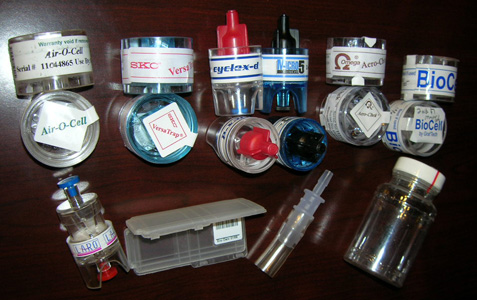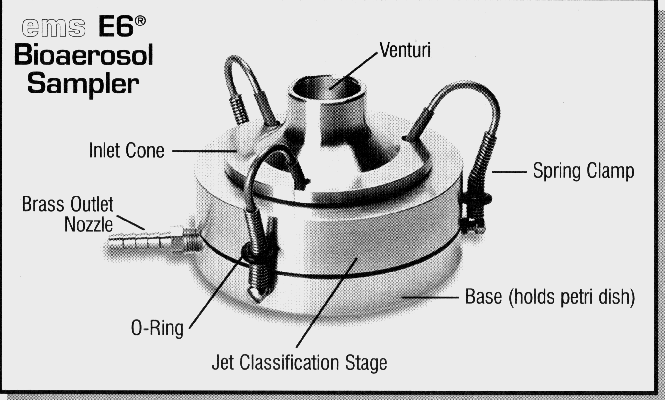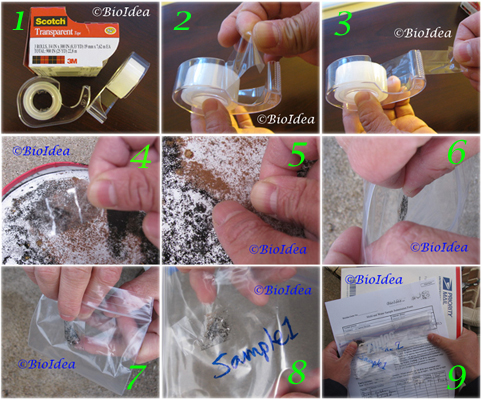How to Do Your Sampling?
BioIdea has EMS AllergencoD spore trap air cassettes to supply, and vacuum pump, flowmeter, cassette adaptor, timer, Anderson Impactor to rent.
Be careful if you never did sampling before. Very importantly, if you are sampling using air cassettes (which are expensive), follow each manufacturer's instruction! BioIdea is not liable for any mistake you make.
Make sure the air-flow direction through cassettes or E6 Microbial Impactor (Anderson Impactor) is correct! Overloading air cassettes will render reading impossible, wasting expensive air cassettes. Overloading molds or bacteria onto medium plates in Anderson Impactor will make reading inaccurate.
A. Sample your air with Air-Cassette
Forair cassettes such as EMS AllergencoD and Zefon AOC, with a vacuum pump of flow-rate of 15 L/Min, sample very clean indoor air for 10 min, dirty air for 2-3 min, very dirty air in such as demolition site, moldy basement etc, for only 1 minute. For wall check, time is 0.5 min!

B. Collect samples for Direct-Exam (click here for detailed procedure of Tape-Lift DIY)
- Tape-Lift of surface material is an easy, quick and accurate method. (Click here for detailed procedure of Tape-Lift DIY)
- Swab is another easy method if you have got these swabs (wet swabs are recommended, no Watery swabs). Copan or HealthLink brand swabs are good. Follow manufactuerer's instruction.
- Bulk material sample is the 3rd method, chip off a piece of surface material and put into a Zip-Loc bag, send to us for lab analysis.
C. Sample your air with EMS E6 Microbial Impactor
For M31, using E6 Microbial Impactor (Andersen Impactor), the impactor lid must be cleaned by alcohol wipe for each sample to prevent cross-contamination.
 Follow manufactuerer's instruction.
Follow manufactuerer's instruction.D. Sample your water for Drinking Water and BacteriaTesting
BioIdea has Water Bottle to supply.
BioIdea has Water Bottle to supply.
Find absolute clean bottles, such commercially availabe sterile bolltes, or boiling-treated bottles, bleach-clean-and-rinsed bottles are OK.
For tap water, let it run a few minutes, then fill >100 ml volume. For well-water, or ground water, sample the typical part of it with a volume >100 ml.

